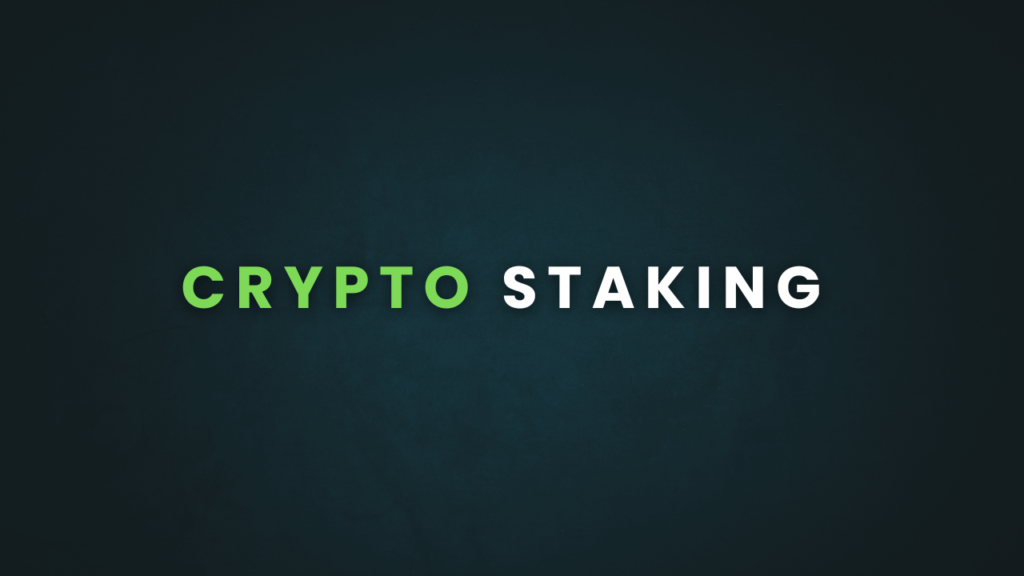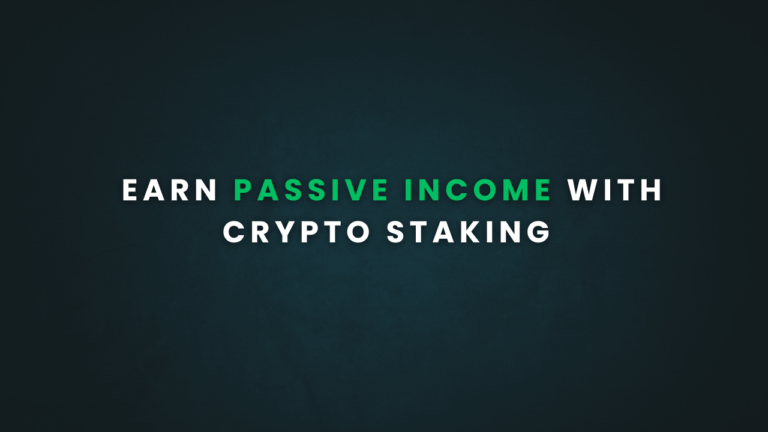Earn Passive Income with Crypto Staking : A Step-by-Step Guide
Imagine earning money while you sleep, just by holding onto your cryptocurrency. Sounds too good to be true? Well, with crypto staking, it’s possible! In this guide, I’ll walk you through what staking is, how it works, and how you can start earning passive income today. Whether you’re new to cryptocurrency or an experienced investor, staking is a simple and exciting way to make your assets work for you.

Cryptocurrency has changed how we think about money, and crypto staking is one of the coolest trends in this space. No need for fancy equipment or constant trading—just a wallet, some coins, and a little know-how. Let’s dive in!
What is Crypto Staking?
At its heart, crypto staking is like putting your money in a savings account, but for cryptocurrency. You hold and “lock up” your coins in a wallet to help a blockchain network run smoothly. In return, you earn rewards—usually more of the same cryptocurrency.
Here’s how it works: some blockchains use a system called Proof of Stake (PoS) to process transactions and create new blocks. Unlike Proof of Work (PoW)—where miners use powerful computers to solve puzzles (and burn a ton of energy)—PoS picks validators based on how many coins they “stake” as a kind of security deposit. The more you stake, the better your odds of being chosen to validate transactions and earn staking rewards.
Think of it this way: in PoW, it’s all about computing power; in PoS, it’s about how much you’re willing to commit. Popular coins like Ethereum 2.0, Cardano, Polkadot, and Tezos all use PoS or similar systems. Want to learn more about PoS? Check out the Ethereum Foundation’s explanation.
Benefits of Staking
Why bother with staking? Here are some awesome perks :
- Passive Income: Stake your coins and watch the rewards roll in—often at rates way higher than a bank savings account.
- Supporting the Network: Your staked coins help keep the blockchain secure and decentralized.
- Eco-Friendly: Staking uses way less energy than mining, so it’s kinder to the planet.
- Easy to Start: No need for tech skills or pricey hardware—just a wallet and some coins.
Risks Involved
But hold on—staking isn’t all sunshine and rainbows. There are a few risks to keep in mind:
- Price Swings: Crypto prices can be a rollercoaster. Your staked coins might drop in value.
- Lock-Up Periods: Some staking setups tie up your coins for a set time, so you can’t sell or trade them right away.
- Slashing: If you (or your validator) mess up—like going offline—you could lose some of your stake as a penalty.
- Tech Glitches: Bugs in the wallet or blockchain could cause issues.
Before you jump in, weigh these risks against the rewards. Only stake what you’re okay with risking!
How to Get Started with Staking: A Step-by-Step Guide
Ready to start earning passive income through crypto staking? Here’s how to do it, step by step:
Step 1: Choose the Right Cryptocurrency
Not every crypto can be staked—you need one that uses Proof of Stake. Here are some top picks:
- Ethereum (ETH): Since moving to Ethereum 2.0, staking is huge here. You’ll need 32 ETH to run your own validator, though, which is a big investment.
- Cardano (ADA): Super beginner-friendly with no minimum stake required.
- Polkadot (DOT): Lets you nominate validators to stake for you.
- Tezos (XTZ): Offers flexible staking with no lock-up in some cases.
Pick a coin based on its staking rewards, the project’s reputation, and your goals. Not sure about reward rates? Check out Staking Rewards for up-to-date info.
Step 2: Set Up a Wallet
You’ll need a wallet that supports staking for your chosen coin. Here are your options:
- Software Wallets: Apps like Daedalus (for Cardano) or Yoroi (for Cardano and others) are easy to use.
- Hardware Wallets: Devices like Ledger keep your coins extra safe and support staking for some currencies.
- Exchange Wallets: Platforms like Binance or Coinbase offer staking, but they take a cut of your rewards.
For the best security, go with a non-custodial wallet (one where you control the private keys). Download it, set it up, and you’re ready to roll.
Step 3: Get Your Cryptocurrency
Don’t have the coins yet? Buy them on an exchange like Binance, Coinbase, or Kraken. Once you’ve got them, transfer them to your staking wallet. Double-check the wallet address—crypto transactions can’t be undone!
Step 4: Stake Your Coins
Now for the fun part—staking! The exact process depends on your coin and wallet, but here’s the general idea:
- Software Wallet: Open the app, find the staking section, and choose a validator or stake pool to delegate to.
- Hardware Wallet: Use a companion app to stake while keeping your keys offline.
- Exchange: Just opt into their staking program, and they’ll handle it.
Let’s use Cardano as an example with the Yoroi wallet:
- Install Yoroi and create a wallet.
- Send ADA to your wallet.
- Go to the “Delegation” tab.
- Pick a stake pool (look for low fees and good performance).
- Hit “Delegate” and confirm.
Boom—you’re staking!
Step 5: Monitor and Manage Your Stakes
Once you’re staked, rewards start coming in. How often depends on the blockchain—Cardano pays every 5 days, for example. Most wallets show your earnings in a dashboard.
Keep an eye on things:
- Check validator performance and switch if needed.
- Watch for lock-up periods if you want to unstake.
- Stay updated on the project via crypto news sites like CoinDesk.
Popular Staking Platforms
Don’t want to deal with wallets? Try these platforms:
- Binance Staking: Tons of coins, great rewards.
- Kraken Staking: Simple and reliable.
- Coinbase: Perfect for beginners.
They make staking easy, but they’ll take a small fee from your rewards.
Tips for Maximizing Staking Rewards
Want to boost your earnings? Try these:
- Pick High-Yield Coins: Look for good reward rates, but research the risks.
- Diversify: Stake a few different coins to spread out your risk.
- Stay Updated: Follow blockchain news to avoid surprises.
- Reinvest: Put your rewards back into staking to grow your income over time.
Conclusion
Crypto staking is a fantastic way to earn passive income while supporting the blockchain networks you care about. With this step-by-step guide, you’ve got everything you need to get started. Pick a coin, set up a wallet, stake your assets, and watch those rewards pile up!
Crypto can be unpredictable, so do your homework and only stake what you’re comfortable with. Ready to give it a shot? Start small, learn as you go, and enjoy the ride. Happy staking!






